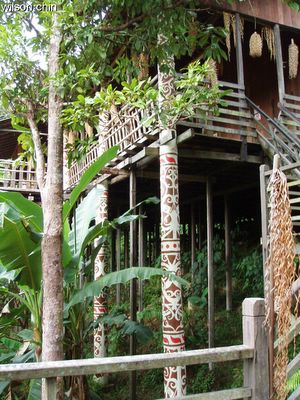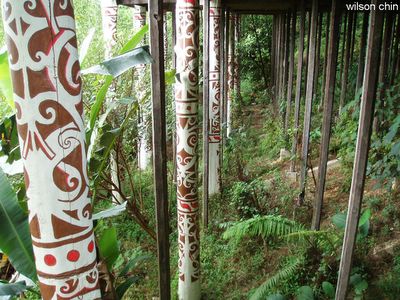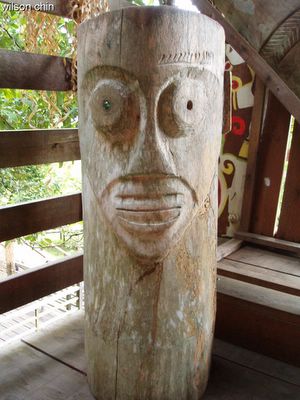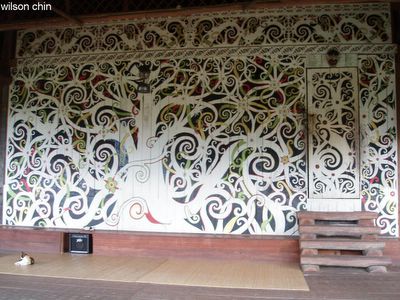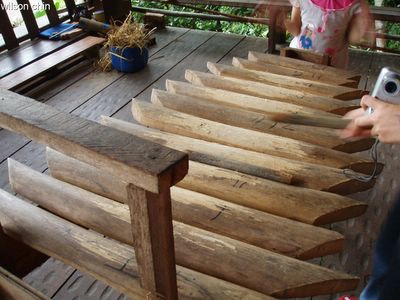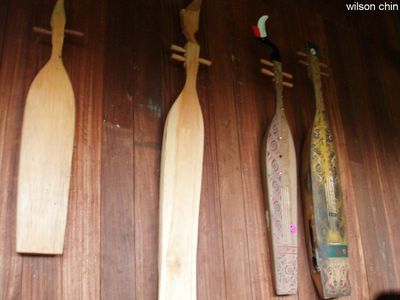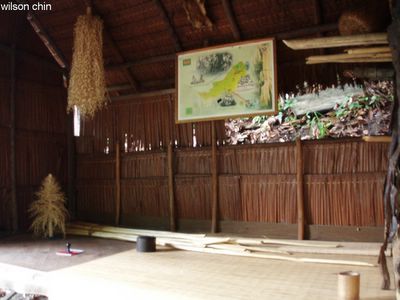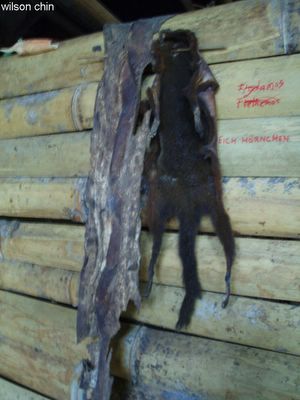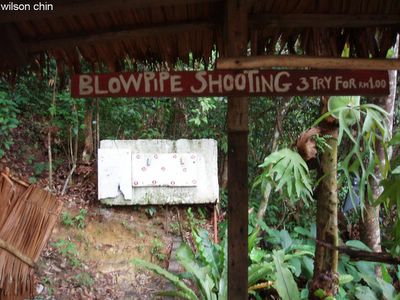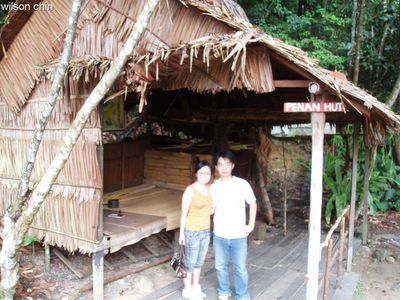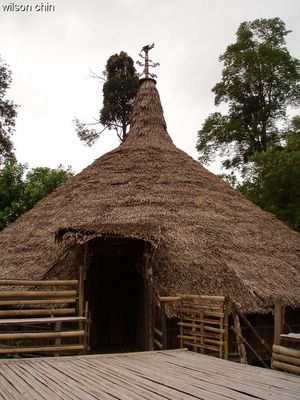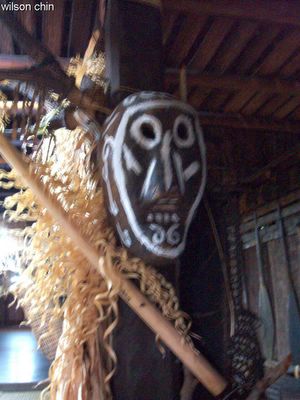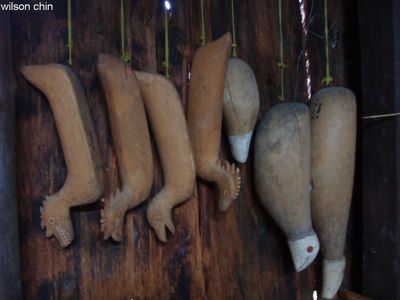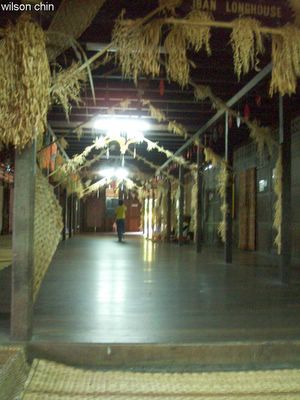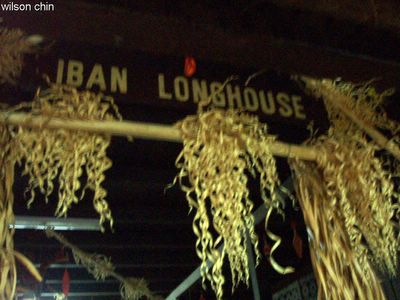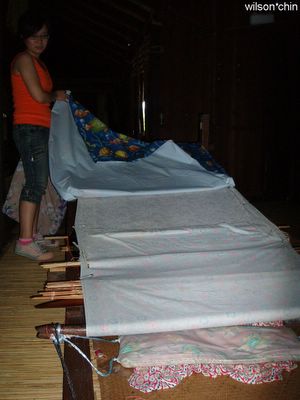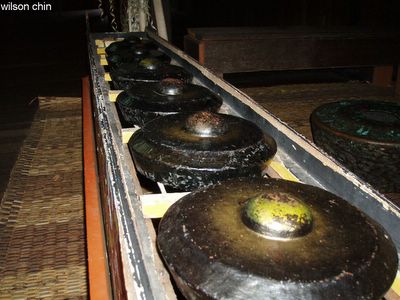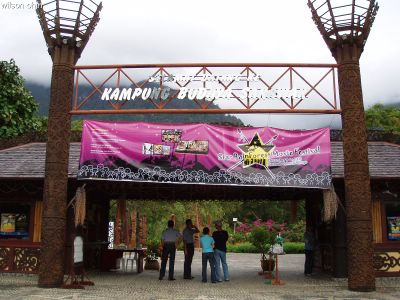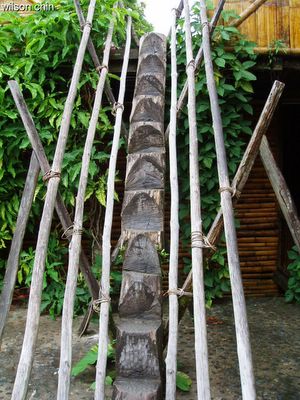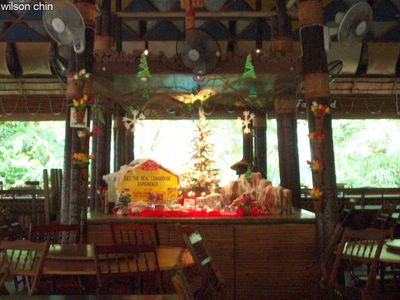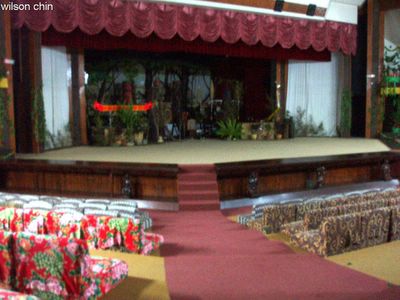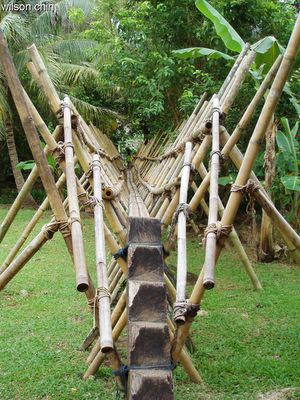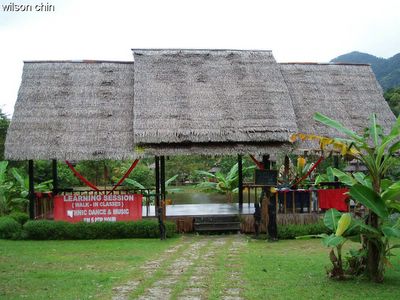The Melanau village, some facts about them that I copy from the sign board.
The Melanau mainly living along the coast, between the Rajang and the Baram Rivers. They can be boardly sub-divided into a pagan, a Muslim and a Christian group. The Melanau are fearless fisherman and competent boad-builders. Their staple food is sago, the starch of a tall palm that can be grown in the brackish water of river. The villages look very much like the traditional Malay kampong found all over Sarawak. In the past, some Melanau built tall longhouses as a precaution against enemy attacks.
Their daily food is sago, the starch found in the pith of the sago palm. The tall palm is felled at the right stage of maturity. The trunks are floated to the village, stripped and split. The wedges of sago pith are rasped into a coarse, wet mash. The sago mash is pilled on strong mats over shallow troughs. Now it must be trodden to force the starch ino the containers below. Work usually done by women in riverside huts specially built for the purpose.
The starch is left to settle in the bottom of the troughs. Then the water is poured off, the thick starchy paste further drained, kneaded, and dried, into the rough “sago flour”. The product is further refined before it is processed into starch, glue, foodstuffs or condiments. Traditional Melanau sago products include dry pellets, grits, and several kinds of biscuits baked on clay hearths.

Information board on the Melanau people
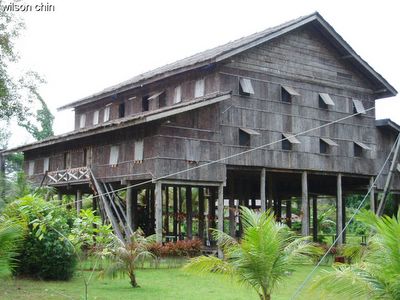
Tall longhouse, to prevent the attack from enemy and dangerous animals.

This looks like a swing, and a training ground of some kind.

Jing and I went to visit the house, this is the path that lead us to the house

Here a close up look on the house, I can see that the wall is made from bark, there are two entrance, and a lot of windows
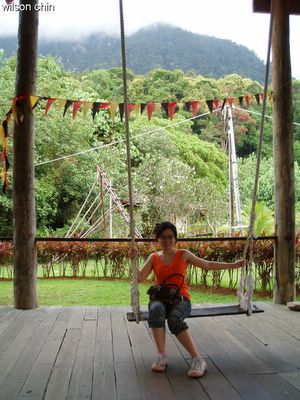
The Melanau people must be like swing, as there is another swing on the house.

This is like a traditional dance, two person squat on each end of the bamboo, hold on both end, simultaneously place the bamboo left, right, left, right.... And a dancer will be dancing in the middle while preventing her feet from being clip by the bamboo.

After that we visit their kitchen to see how they made the delicious sago
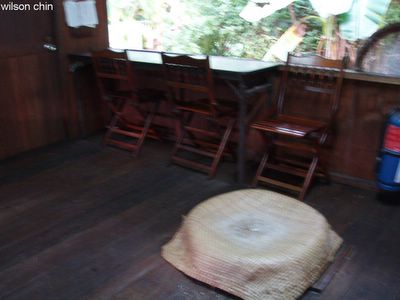
But unfortunately no one was at the kitchen
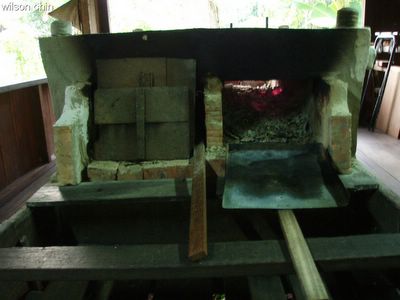
I got in to the kitchen and snap a few shoots.
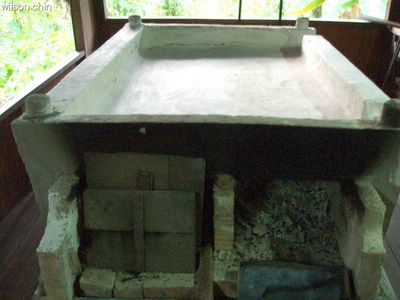
Found out that the clay hearths are still very hot. It looks like they had just finish backing a sago cake.

This might be the tools that they use to get sago from the sago palm
The Melanau mainly living along the coast, between the Rajang and the Baram Rivers. They can be boardly sub-divided into a pagan, a Muslim and a Christian group. The Melanau are fearless fisherman and competent boad-builders. Their staple food is sago, the starch of a tall palm that can be grown in the brackish water of river. The villages look very much like the traditional Malay kampong found all over Sarawak. In the past, some Melanau built tall longhouses as a precaution against enemy attacks.
Their daily food is sago, the starch found in the pith of the sago palm. The tall palm is felled at the right stage of maturity. The trunks are floated to the village, stripped and split. The wedges of sago pith are rasped into a coarse, wet mash. The sago mash is pilled on strong mats over shallow troughs. Now it must be trodden to force the starch ino the containers below. Work usually done by women in riverside huts specially built for the purpose.
The starch is left to settle in the bottom of the troughs. Then the water is poured off, the thick starchy paste further drained, kneaded, and dried, into the rough “sago flour”. The product is further refined before it is processed into starch, glue, foodstuffs or condiments. Traditional Melanau sago products include dry pellets, grits, and several kinds of biscuits baked on clay hearths.

Information board on the Melanau people

Tall longhouse, to prevent the attack from enemy and dangerous animals.

This looks like a swing, and a training ground of some kind.

Jing and I went to visit the house, this is the path that lead us to the house

Here a close up look on the house, I can see that the wall is made from bark, there are two entrance, and a lot of windows

The Melanau people must be like swing, as there is another swing on the house.

This is like a traditional dance, two person squat on each end of the bamboo, hold on both end, simultaneously place the bamboo left, right, left, right.... And a dancer will be dancing in the middle while preventing her feet from being clip by the bamboo.

After that we visit their kitchen to see how they made the delicious sago

But unfortunately no one was at the kitchen

I got in to the kitchen and snap a few shoots.

Found out that the clay hearths are still very hot. It looks like they had just finish backing a sago cake.

This might be the tools that they use to get sago from the sago palm


